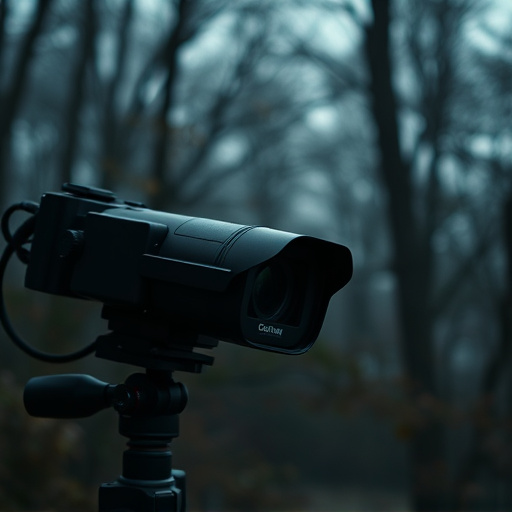Using an RF detector, a tool that identifies wireless signals, travelers can uncover hidden spy cameras in Airbnb properties. Before scanning, inspect visually for signs of surveillance and calibrate the detector. During the sweep, move methodically at ground level, checking all surfaces and focusing on common camera hiding spots. Analyze peak signal strengths and anomalies post-scan to pinpoint hidden cameras. Strengthen security with encrypted Wi-Fi and locks to prevent privacy breaches.
Uncover hidden threats with our comprehensive guide on detecting spy cameras using RF (radio frequency) detectors. Learn how these advanced tools work in identifying covert surveillance devices, especially in popular rentals like Airbnb. From understanding RF technology’s intricacies to mastering sweep techniques and analyzing results, this tutorial equips you with the knowledge to protect your privacy. Discover best practices for pre-sweep checks and proactive measures against hidden cameras, ensuring a safer and more secure environment.
- Understanding RF Detector Technology for Spy Camera Detection
- Pre-Sweep Preparation: What to Check Before You Start
- Executing the Sweep: Techniques and Best Practices
- Analyzing Results and Taking Preventive Measures Against Hidden Cameras
Understanding RF Detector Technology for Spy Camera Detection
The RF (Radio Frequency) detector is a powerful tool in the arsenal of anyone aiming to uncover hidden spy cameras, especially in popular rental spaces like Airbnbs. This technology operates on the principle of detecting the wireless signals emitted by covert camera modules. Spy cameras often use RF transmission to send footage or data to a remote receiver, making them susceptible to detection by specialized equipment.
By sweeping the affected area with an RF detector, users can pinpoint the location of these hidden devices. These detectors emit sounds or visual cues when they encounter radio signals, allowing for easy navigation towards the source. Understanding how RF technology works is crucial in effectively spotting spy cameras and ensuring a safe and private environment, especially for travelers using short-term rentals.
Pre-Sweep Preparation: What to Check Before You Start
Before conducting an RF detector sweep, there are several crucial checks to make to ensure the process is effective and safe. Start by inspecting the room or area thoroughly for any visible signs of hidden cameras, such as suspicious devices or attachments on walls, ceilings, or furniture. Look for any unusual wires or connectors that might indicate a spy camera setup.
Next, familiarize yourself with the RF detector’s functionality and settings. Ensure you understand how to interpret the readings and identify potential sources of radio frequency interference (RFI). Test the device in an area without known cameras to calibrate and adjust its sensitivity levels accurately. This preparation is vital to maximize your chances of successfully locating hidden surveillance equipment, especially when searching for spy cameras in high-risk areas like Airbnb properties.
Executing the Sweep: Techniques and Best Practices
Executing a radio-frequency (RF) detector sweep is an art that requires precision and practice, especially when searching for hidden cameras in locations like Airbnb properties. To effectively spot spy cameras, start by conducting a thorough initial survey of the area to identify any suspicious or unusual objects or devices. This visual inspection is crucial as it can often reveal potential triggers for setting off the RF detector.
During the sweep itself, move methodically and cover all angles. Hold the detector at an angle parallel to the ground, scanning each surface including walls, ceilings, and floors. Pay close attention to areas where cameras are commonly hidden—behind picture frames, inside clock radios, or within electrical outlets. Regularly check the detector’s display for any spikes or signals, which could indicate the presence of a wireless device. Adjust your frequency settings as needed to capture different types of transmissions, ensuring you cover a wide range to account for various camera models.
Analyzing Results and Taking Preventive Measures Against Hidden Cameras
After conducting an RF detector sweep, analyzing the results is a crucial step in identifying hidden cameras. The data gathered can reveal unusual wireless signals that may indicate the presence of spy cameras, especially in places like Airbnb accommodations. Look for peaks or anomalies in signal strength that could suggest secretly placed surveillance devices.
Once identified, taking preventive measures is essential to protect your privacy. This includes reinforcing security protocols such as using secure Wi-Fi networks with strong encryption, installing physical security barriers like door and window locks, and being vigilant during stays in unfamiliar locations. Regularly updating security software and staying informed about the latest spy camera detection techniques can also significantly enhance your defenses against hidden surveillance.
Detecting hidden cameras using RF (Radio Frequency) detectors is a valuable skill for anyone looking to ensure their privacy, especially when renting or staying in unfamiliar places like Airbnbs. By understanding RF detector technology and following best practices during pre-sweep preparation and execution, you can effectively navigate and protect yourself from potential spy cameras. Analyzing the results of your sweep allows you to take preventive measures, ensuring a safer and more secure environment. Remember, staying informed and proactive is key to spotting these clandestine devices.
